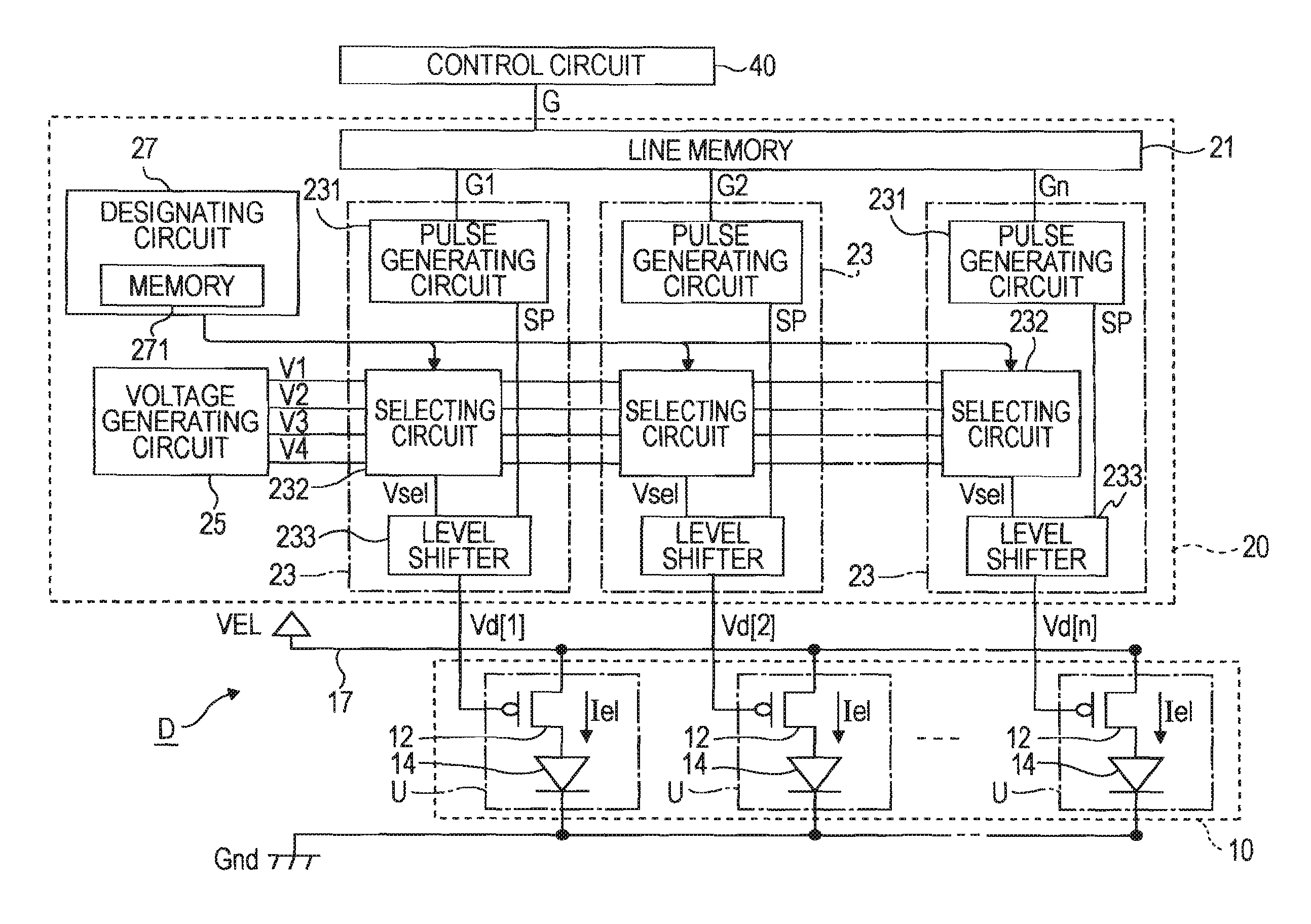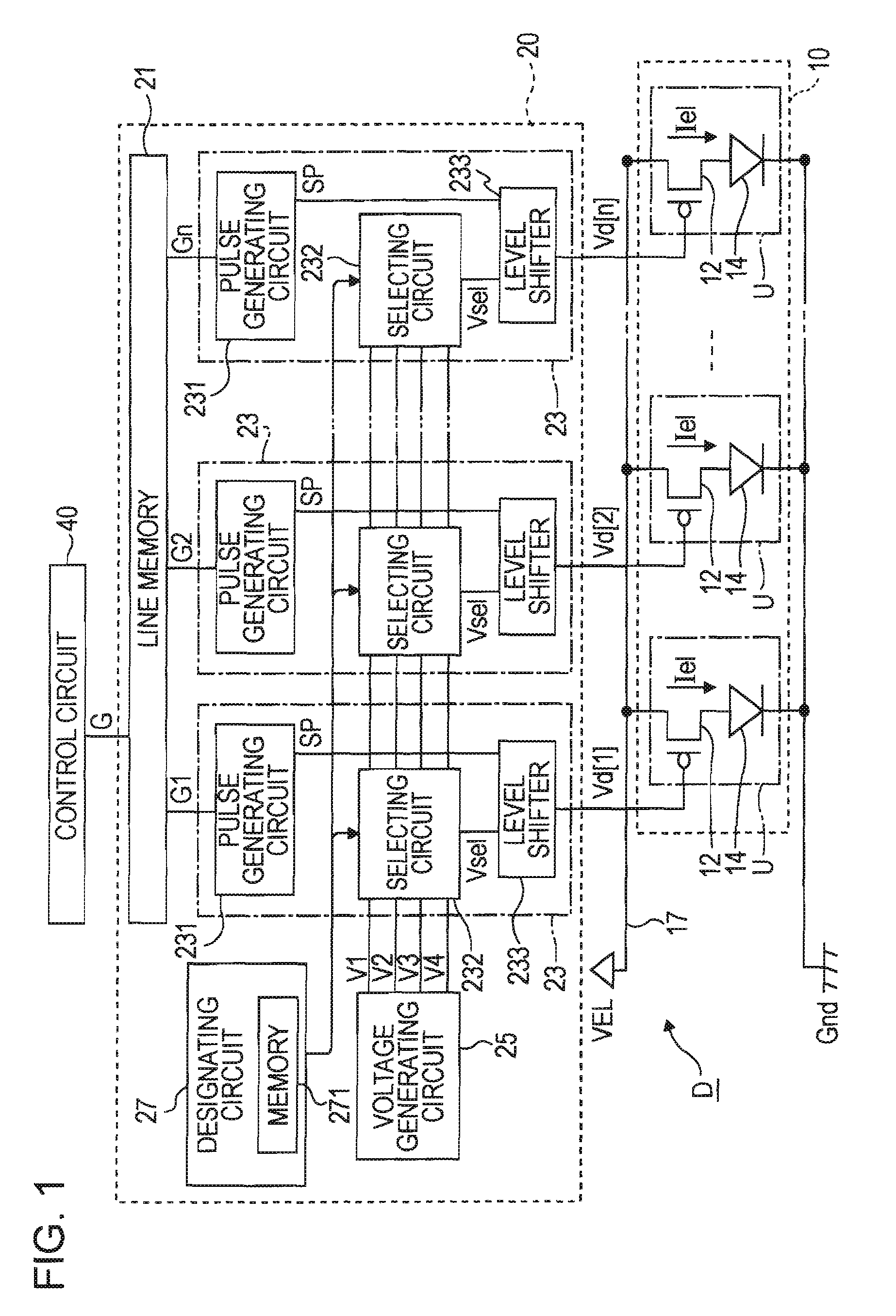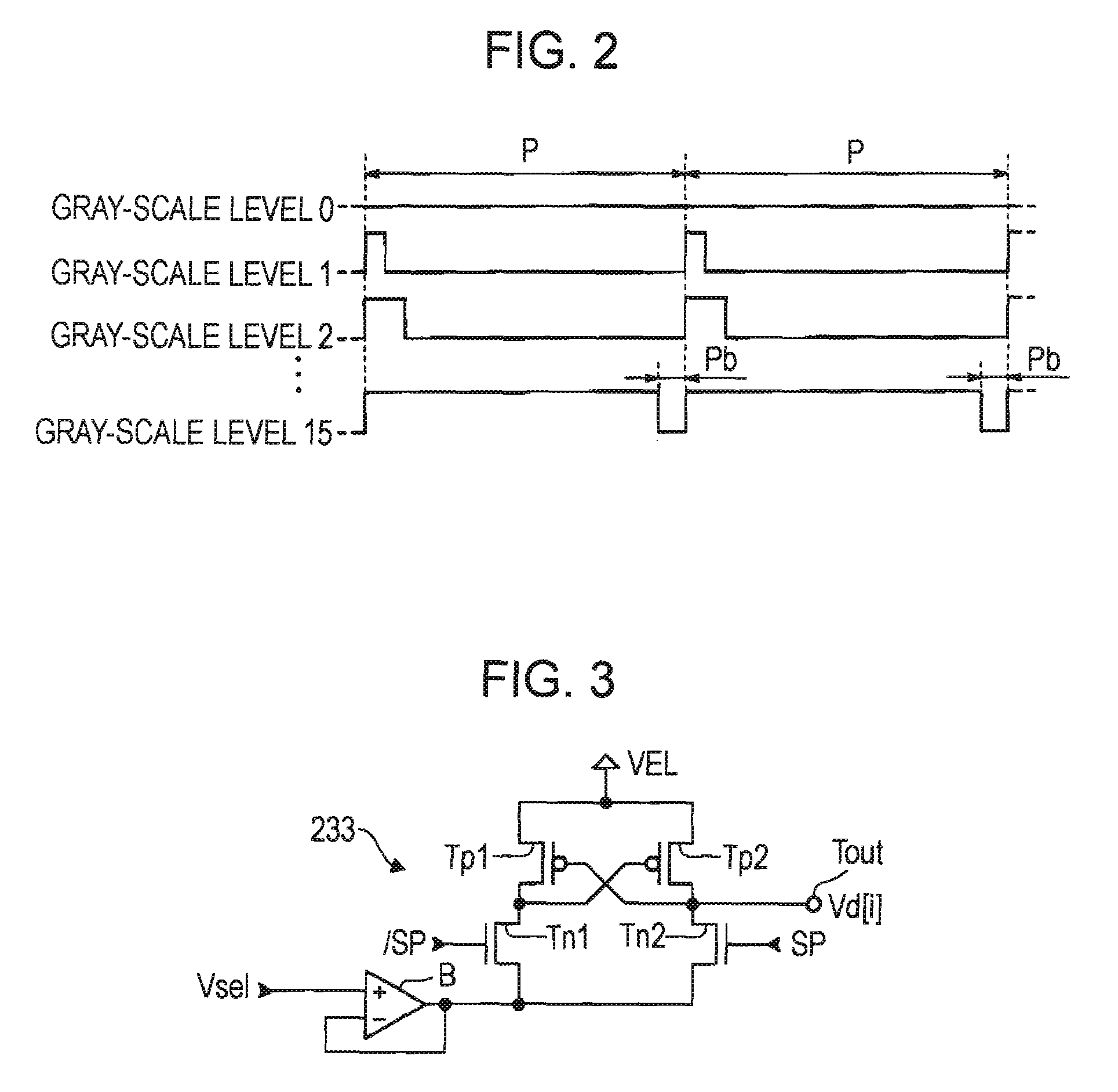Light-emitting device, circuit for driving the same, and electronic apparatus
a technology of light-emitting elements and circuits, applied in static indicating devices, instruments, electroluminescent light sources, etc., can solve the problems of different brightness levels of light-emitting elements, and achieve the effect of high accuracy
- Summary
- Abstract
- Description
- Claims
- Application Information
AI Technical Summary
Benefits of technology
Problems solved by technology
Method used
Image
Examples
first embodiment
[0028]FIG. 1 is a block diagram illustrating the structure of a light emitting device according to a first embodiment of the invention. A light emitting device D of this embodiment is used as an exposure head for exposing a photoreceptor in an image forming apparatus (a printing apparatus) which forms a latent image by exposing the photoreceptor. As shown in FIG. 1, the light emitting device D includes a light emitting unit 10 having n unit circuits U (n is a natural number) arranged in a row along a scanning line, a driving circuit 20 for driving the unit circuits U, and a control circuit 40 for controlling the operation of the driving circuit 20.
[0029] Each of the n unit circuits U forming the light emitting unit 10 includes a driving transistor 12 and a light emitting element 14. The light emitting element 14 is a current driven type element for emitting light having brightness corresponding to a driving current Iel. For example, the light emitting element 14 is an OLED element ...
second embodiment
[0049] Next, a second embodiment of the invention will be described below.
[0050] In the first embodiment, contents to be designated by the designating circuit 27 is previously determined according to the characteristic value of each of the driving transistors 12 which is measured, for example, before the shipment of the light emitting device D. In contrast, in the second embodiment, contents to be designated by the designating circuit 27 (that is, the voltage Vsel output from each of the selecting circuits 232) is changed whenever necessary according to the actual usage environment of a light emitting device D. Further, in the second embodiment, the same components as those in the first embodiment have the same reference numerals, and thus a description thereof will be omitted for the purpose of simplicity.
[0051]FIG. 4 is a block diagram illustrating the structure of the light emitting device D according to the second embodiment of the invention. The light emitting device D includ...
first modification
[0063] The structures of the components shown in FIG. 1 arbitrarily change. For example, each of the signal processing circuits 23 may be formed in a structure shown in FIG. 5. The signal processing circuit 23 shown in FIG. 5 (in this modification, an i-th signal processing circuit 23 is given as an example) includes a selecting circuit 235, a switch SWb, and a control circuit 236. In the structure shown in FIG. 5, the designating circuit 27 shown in FIG. 5 is omitted from the signal processing circuit 23.
[0064] The selecting circuit 235 includes four switches SWa corresponding to voltages V1 to V4. One end of each of the switches SWa is connected to a common output terminal Tout for a data signal Vd[i]. The other ends of the switches SWa are connected to wiring lines through which the voltages (V1 to V4) corresponding to the switches SWa are supplied. Meanwhile, one end of the switch SWb is connected to a power line through which a power supply voltage VEL is supplied, and the oth...
PUM
 Login to View More
Login to View More Abstract
Description
Claims
Application Information
 Login to View More
Login to View More - R&D
- Intellectual Property
- Life Sciences
- Materials
- Tech Scout
- Unparalleled Data Quality
- Higher Quality Content
- 60% Fewer Hallucinations
Browse by: Latest US Patents, China's latest patents, Technical Efficacy Thesaurus, Application Domain, Technology Topic, Popular Technical Reports.
© 2025 PatSnap. All rights reserved.Legal|Privacy policy|Modern Slavery Act Transparency Statement|Sitemap|About US| Contact US: help@patsnap.com



